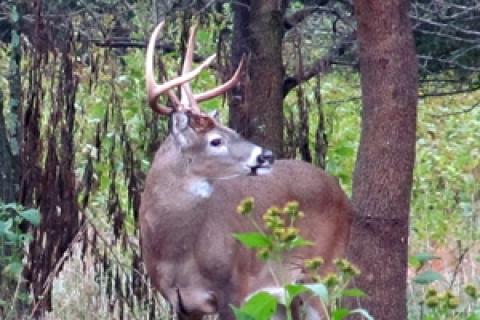
 Most hunters who have pursued whitetails for more than a season or two have learned what "staging areas" are. Basically, they are places where deer hang back in woods or thick cover before entering open areas to feed. They are the edges where trails lead up to late afternoon and night feeding areas and deer hold up before venturing out into the open fields to feed on crops. They'll typically wait in these areas for anywhere from a few minutes to an hour to make sure things look safe.
Most hunters who have pursued whitetails for more than a season or two have learned what "staging areas" are. Basically, they are places where deer hang back in woods or thick cover before entering open areas to feed. They are the edges where trails lead up to late afternoon and night feeding areas and deer hold up before venturing out into the open fields to feed on crops. They'll typically wait in these areas for anywhere from a few minutes to an hour to make sure things look safe.
Make no mistake about it: These well-known staging areas are good spots to kill a buck. If you want to shoot the biggest buck in the herd, though, refine things even more precisely and pinpoint "micro staging areas."
This is a name I created to describe small, extra-thick patches of brush near regular deer staging areas. These are spots where old, wary bucks hang back even later in the day than the main herd, waiting closer to darkness before entering open fields.
They're in denser cover or rougher spots and farther away from the main feed area than typical staging areas.
Sometimes they're right on the outside edge of the main staging area. Other times they're satellite locations, perhaps 100-300 yards back closer to a mature buck's daytime bedding cover.
Some of them are located at a distinctive topographical feature such as a dip in terrain, bench, jag in a hillside or head of a hollow. Or they may just be where the vegetation is much thicker than the main staging area — where greenbriers and grapevines swaddle a blow-down or a huge array of raspberries, honeysuckle and saplings create a dense thicket.
Search for these types of areas adjacent to the main staging area or up to a few hundred yards farther back towards higher or thicker bedding cover. Then try to pinpoint sign such as nibbled vegetation, scuffled leaves, large buck tracks or fresh rubs on trees the size of your ankle or thigh.
Once you've discovered a micro staging area and confirm that it's being used by pinpointing fresh sign, hang a stand and wait for the perfect wind.
Let novice hunters wait at the main staging areas. They'll likely bag a doe or fill their tag with a one or two year old buck that enters those gathering spots in shooting light.
To tag the old mature buck you're after, though, pinpoint and hunt a "micro" staging area. These are the spots where the big boys linger until almost dark before moving down to the main staging area and then into the crop fields to join the rest of the herd-after shooting light has vanished.
- 2667 views

